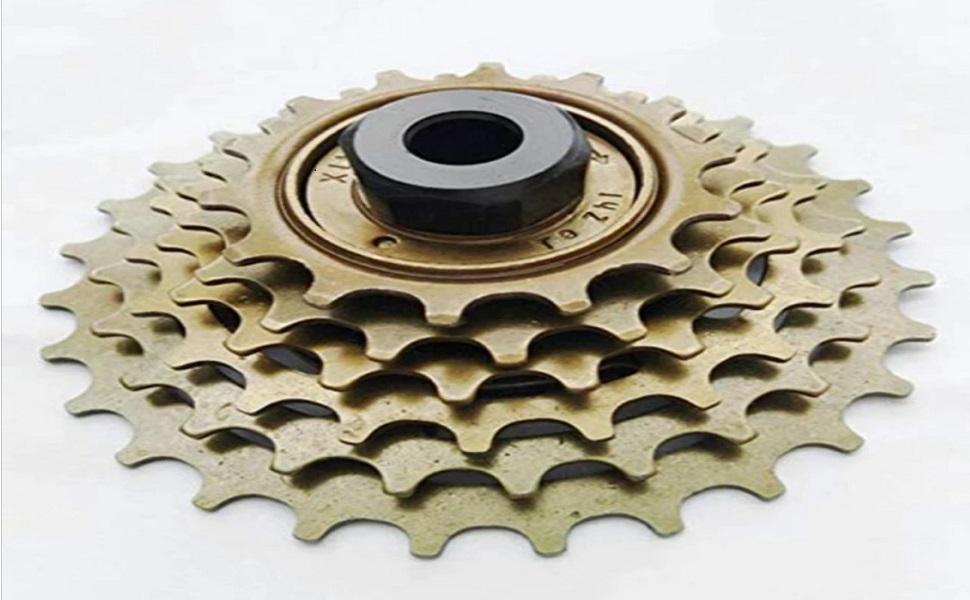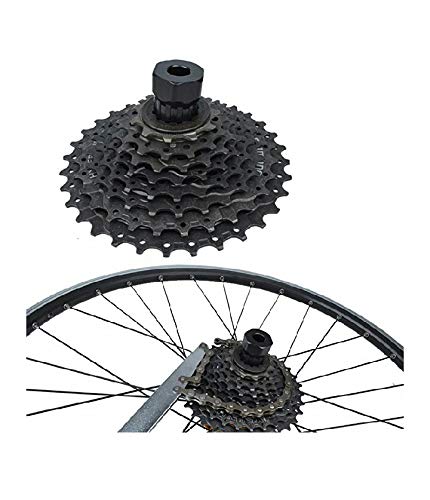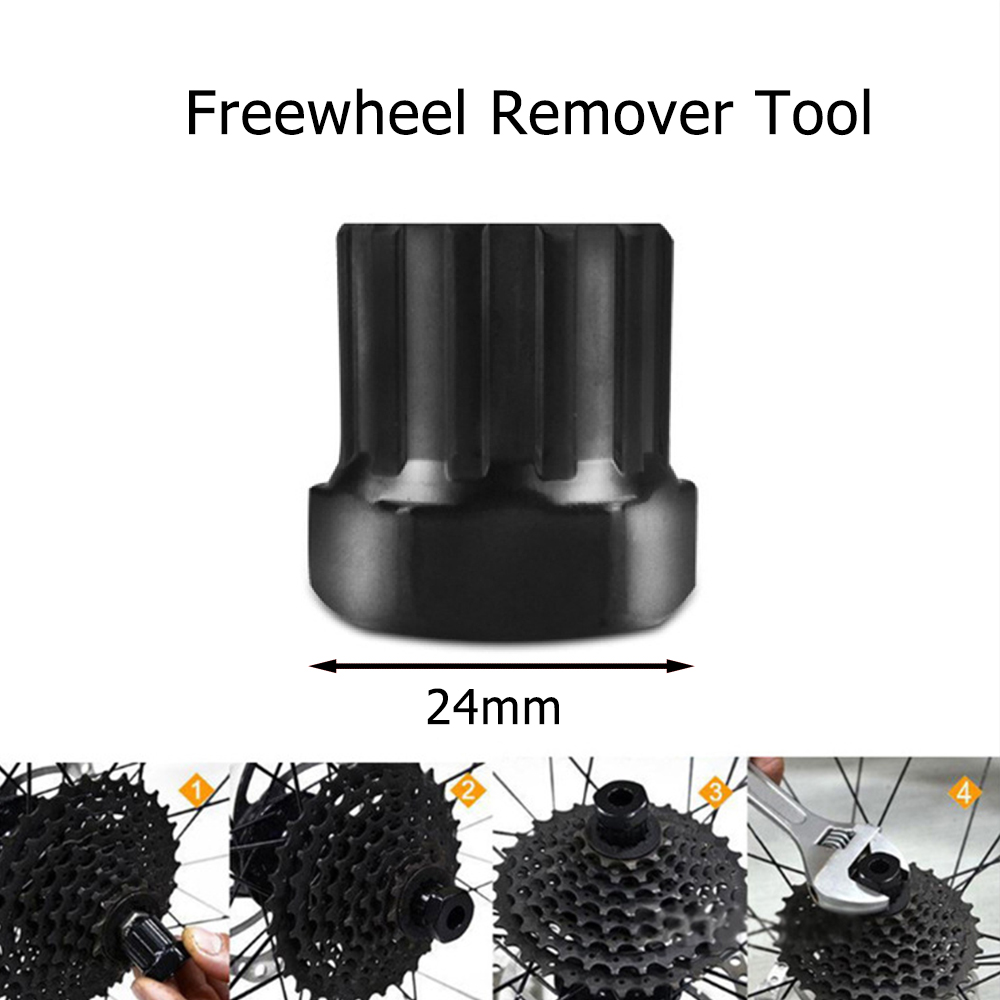Description

GETTING STARTED

The rear cogs are attached to the hub in one of two ways. Newer bikes tend to use type hub called a “cassette hub.” The cassette hub uses a “freehub” sytem, which is a type of clutch mounted to the body of the hub. This cylindrical mechanism ratchets counter-clockwise for coasting, and locks clockwise for driving the bike when pedaled. The freehub body has a series of splines on the outer shell. “Cassette” sprockets slide over these splines. A lockring threads into the freehub and holds the sprockets, or cogs, in place. When the cogs are removed, the ratcheting freehub remains on the hub body. Most modern bicycles use the freehub system.

FREEWHEEL REMOVAL
- Mount bike in repair stand and remove rear wheel from bike.
- Remove quick-release skewer.
- Inspect freewheel center and select correct removal tool (see chart above).
- Engage tool into splines/notches.
- Reinstall quick-release skewer with skewer nut on outside of remover. If solid axle-type, use axle nut to hold frewheel tool.
- Snug skewer nut against remover. Skewer acts as a holding device for remover.
- Turn remover counter-clockwise using a large adjustable wrench. Park Tool freewheel tools will also fit the hex end of Park Tool chain whips such as the SR-12.2, or the FRW-1 freewheel wrench. It will typically require some force to turn the freewheel. Another option is to mount remover flats in hard jaws of vise, and turn rim counter-clockwise.
- Turn remover only 1 full revolution counter-clockwise. Loosen and remove skewer before continuing to remove freewheel.
- Continue to turn remover counter-clockwise until freewheel is unthreaded from hub. Lift freewheel from hub.

FREEWHEEL INSTALLATION
- Lubricate heavily with grease or anti-seize inside mounting threads of freewheel.
- Lay wheel on bench, and hold flat. Hold freewheel so cogs are parallel to wheel rim and lower freewheel onto threads.
- Sight right side of hub and freewheel. Axle should appear centered in hole of freewheel. If axle appears off center, freewheel may be cross-threaded on hub threads. Remove and realign.
- Begin threading cogs clockwise by hand until freewheel feels fully threaded. If a great deal of resistance is encountered, remove and attempt better thread alignment.
- Seat the freewheel:Use a chain whip to rotate the cogs clockwise until snug. This will fully seat the freewheel against hub. Alternatively, install the wheel into the bike, apply the rear brake, and push down on the pedal.
- If a new freewheel was installed or in new wheel installed, check all adjustments of the rear derailleur. See Rear Derailleur Adjustment.
There are some brands and models of thread-on freewheels that have use a lockring to hold the cogs to the freewheel body. This lockring can sometimes be removed; however, there is typically no need to do so. Individual cogs of these freewheels are not typically available. The lockring is used to assemble the freewheel unit, and it is not intended for service. When the cogs wear out, the entire freewheel as a unit must be replaced. In the freewheels below, notice the cog lockrings. These are not “cassette” systems, but threaded freewheels and use the FR-2 and FR-1.3 respectively.

FREEWHEEL TOOL COMPATIBILITY
You will need to determine the style or brand of freewheel you have. The table below shows every style that has a compatible installation & removal tool made by FASTPED.
There are older model freewheels where the tool is no longer available. An old Shimano standard has 12 splines of approximately 20mm. There is an older French Maillard freewheel with 24 splines with an approximate diameter of 31mm. Park Tool does not make tools for these freewheel systems.
It may still be possible reuse the wheel but it will require destroying the freewheel. There are also current models of freewheels that do not have an adequate design for removal. In the image below, the freewheel has two very narrow and shallow notches that do not allow enough purchase for a tool. Removal of this type of freewheel would likely result in ruining both the freewheel and the tool.

|
|
|
|
|---|---|---|













Reviews
There are no reviews yet.